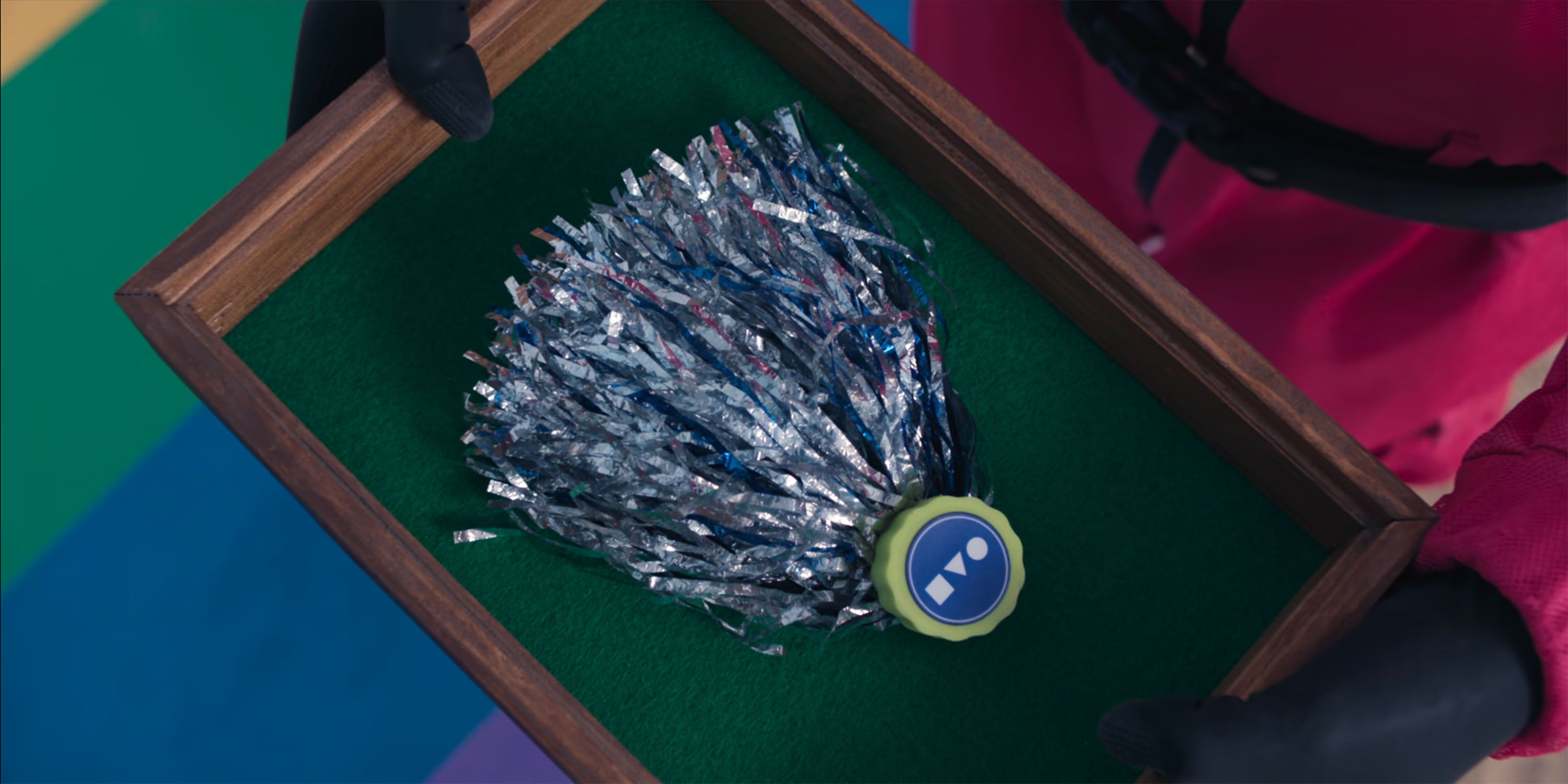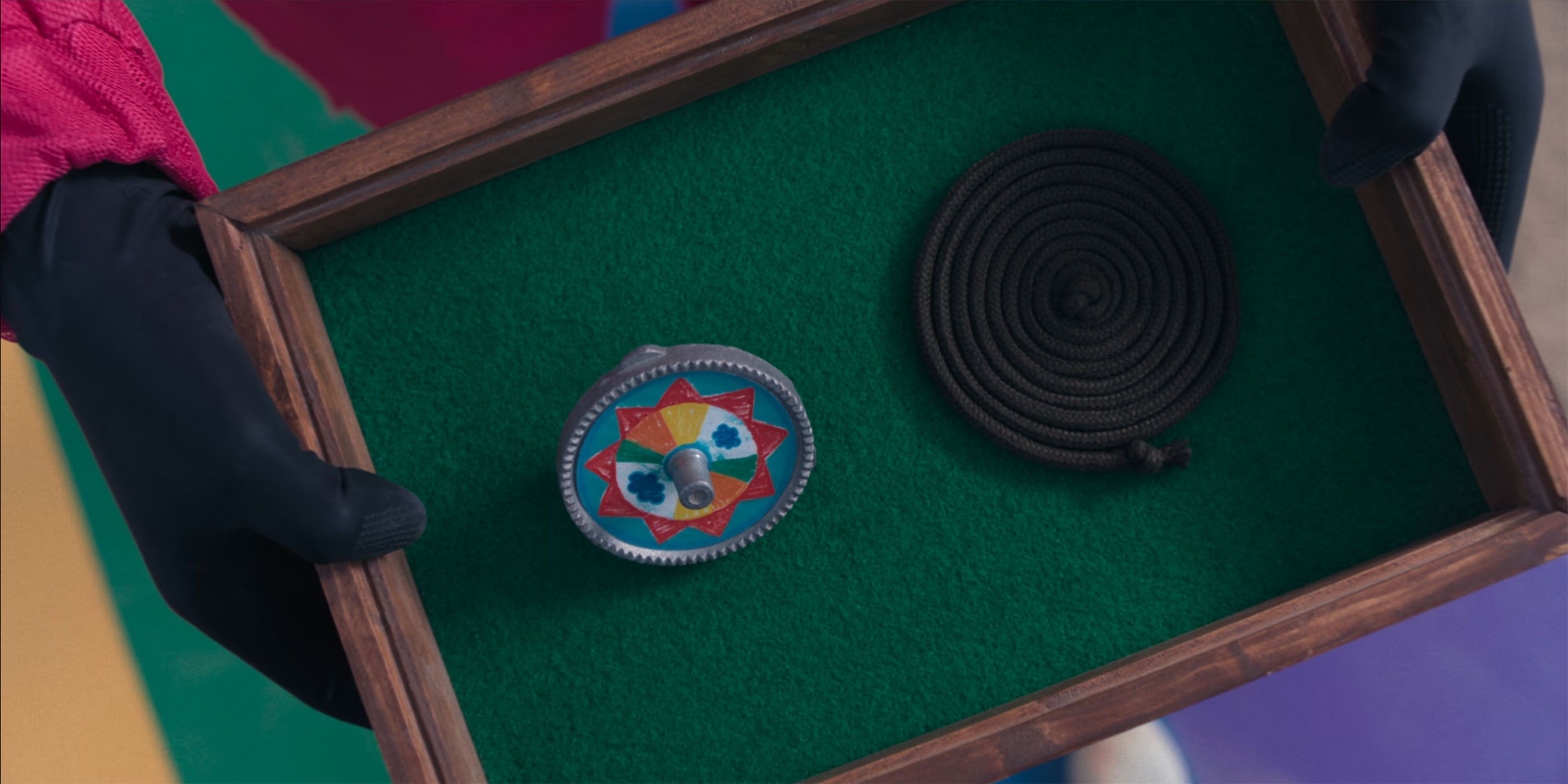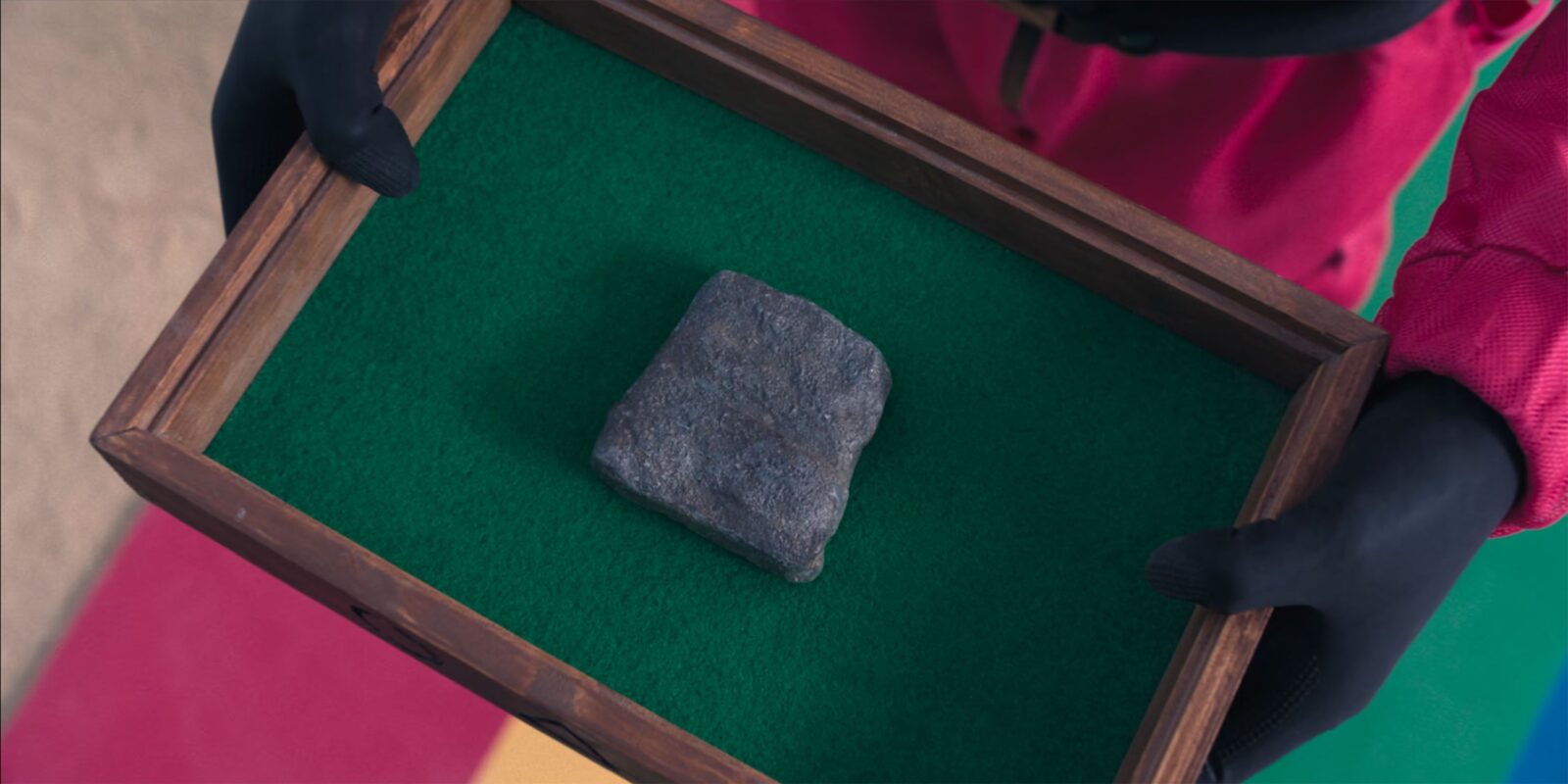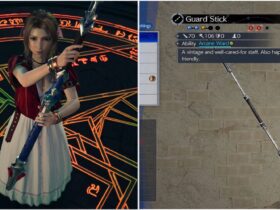The second competition of Squid Game 2024 is a six-legged pentathlon in which five-player teams must tie their legs together and complete a series of minigames to reach the finish line. Teams that complete the race in five minutes or less proceed to the next round. However, teams that fail to complete the race in time get eliminated from the Squid Game (and their mortal coil).
One of the pentathlon’s most demanding children’s games is Biseokchigi, or ‘Flying Stone.’ In this challenge, one player must knock down a target stone by pelting it with their stone from a set distance. If the thrower fails, the whole team must retrieve their stone, walk back to the starting line, and try again. While the pentathlon version of Biseokchigi is condensed, the full version is a fun and imaginative test of coordination.

Related
“One, two, three, four, five!” Keep that Jegi airborne with these tips and tricks for this minigame from Squid Game.
How to Win Biseokchigi
In Squid Game season 2, episode 4, “Six Legs,” the goal of Biseokchigi is to knock down a stone slab with one of your own. The player must achieve this feat without crossing the starting line. If the player hits the stone while crossing the line, they must retrieve their stone and start over.
The pentathlon version of Biseokchigi is abridged. In the original game, players must use various techniques to hit their opponent’s stone to win. This version gets played in pairs.
Biseokchigi Set Up
- Each team needs one stone slab to begin
- Players draw two lines 13-16 feet (4-5 meters) apart
- Players choose which team will go first
- The throwing team stands behind the starting line while the other team places their stone on the opposite line
Biseokchigi Rules
- Each team takes turns attempting to throw their stone at the opponent’s
- A team’s turn ends when a player successfully knocks down the opponent’s stone or all the team’s players try and fail
-
Failed attempts include:
- Missing the opponent’s stone
- Dropping the stone in transit
- Falling down
- Resting hands on the ground
- Touching the opponent’s stone with one’s foot
- The first team to successfully perform every variation of Biseokchigi wins
Biseokchigi Variations
Unlike Squid Game’s minigame version of Biseokchigi, one must attack their opponent’s stone in several ways to win. These methods utilize specific patterns, actions, and body parts. Reference the table below for more information:
|
Biseokchigi Variation |
How to Perform |
|---|---|
|
Geolleomatchugi (Skip-hit) |
|
|
Hanbalgeolgi (One-foot hook) |
|
|
Dubalgeolgi (Two-foot hook) |
|
|
Saebalgeolgi (Three-foot hook) |
|
|
Jaegi |
|
|
OreunbalOenbal (Right foot-left foot) |
|
|
Tokkichigi (Rabbit-hit) |
|
|
Mureupchigi (Knee-hit) |
|
|
Ddalnatgo Adeulnatgi (Daughter and son) |
|
|
Baesajang |
|
|
Shinmunpalie (Newsboy) |
|
|
Janggun (General) |
|
|
Ddeok Janggun |
|

Related
Squid Game: How to Play Paengi Chigi/Spinning Top
Become a spin master with these tips and tricks for Paengi Chigi, a minigame featured in Squid Game’s six-legged pentathlon!
Biseokchigi Tips and Tricks
Throwing one stone at another may seem like quick work. However, that task becomes much more problematic when the target stone is several feet away. Furthermore, with so many stone-throwing techniques, Biseokchigi tests more than hand-eye coordination. Fortunately, there are ways one can improve their skills.
- Use Visualization to Focus on the Target Stone: In Squid Game season 2, episode 5, “One More Game,” Yong-sik initially struggles to knock down the target stone. Fortunately, his mother, Guem-ja, gives him practical advice to narrow his aim. She tells Yong-sik, “Imagine the stone is the face of the crook that scammed you.” Without hesitation, Yong-sik angrily pelts his stone and topples the target stone. Sometimes, a key visual is all one needs to focus on.
- Practice Bounce Throws for Tricky Variations: A direct hit is easy to accomplish when one has the complete throwing force of their arm. However, what can one do when releasing the stone from their armpit or off their stomach? In these cases, practicing bounce hits can generate forward momentum to compensate for the lack of force.
- Experiment with Spin and Angles: Biseokchigi is similar to bowling because both games utilize spin and angles. Examine what angles work best when throwing your stone from different body parts. Furthermore, track how your natural body movements affect your spin and adjust accordingly. This self-awareness will improve the accuracy and efficacy of your aim.












Leave a Reply